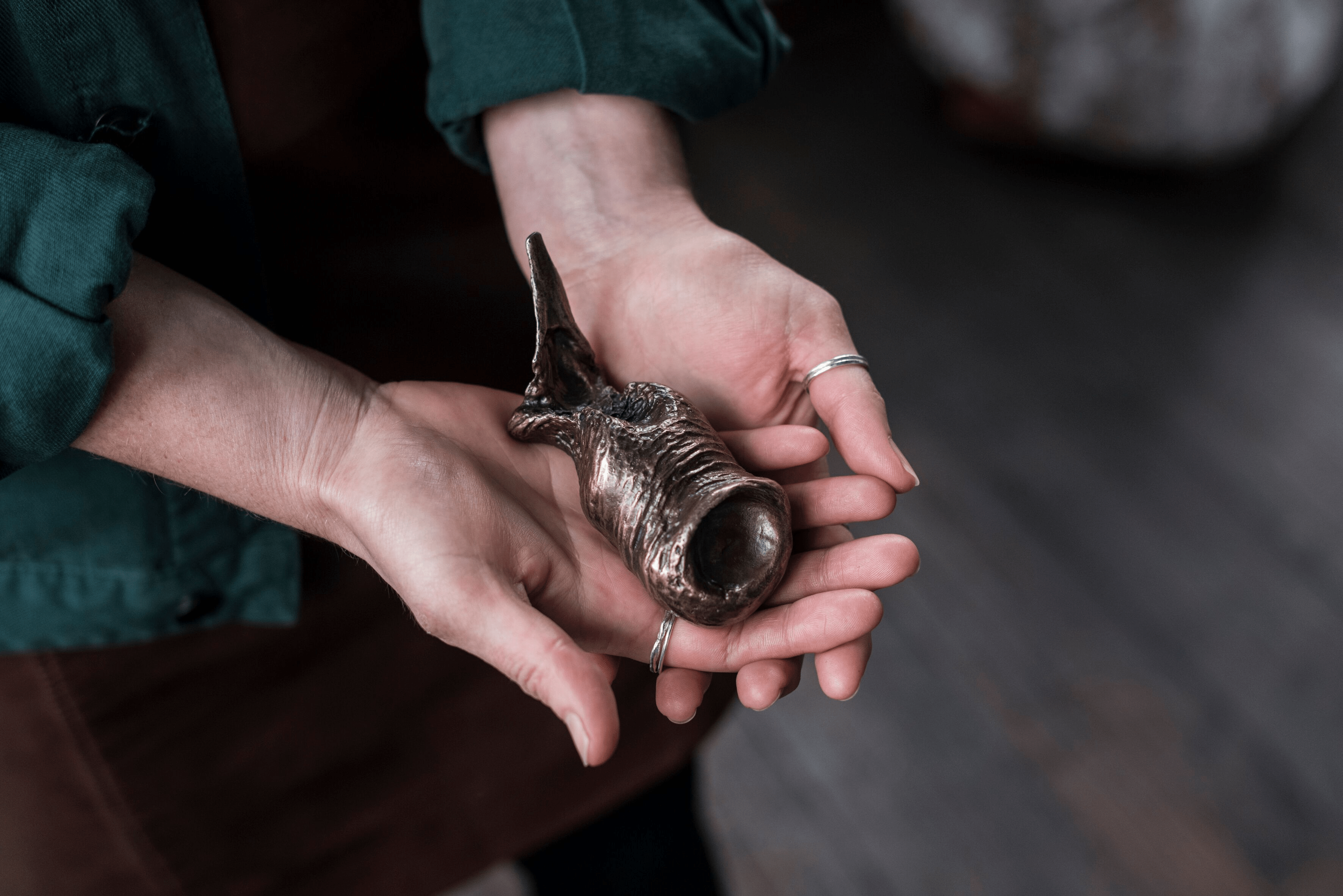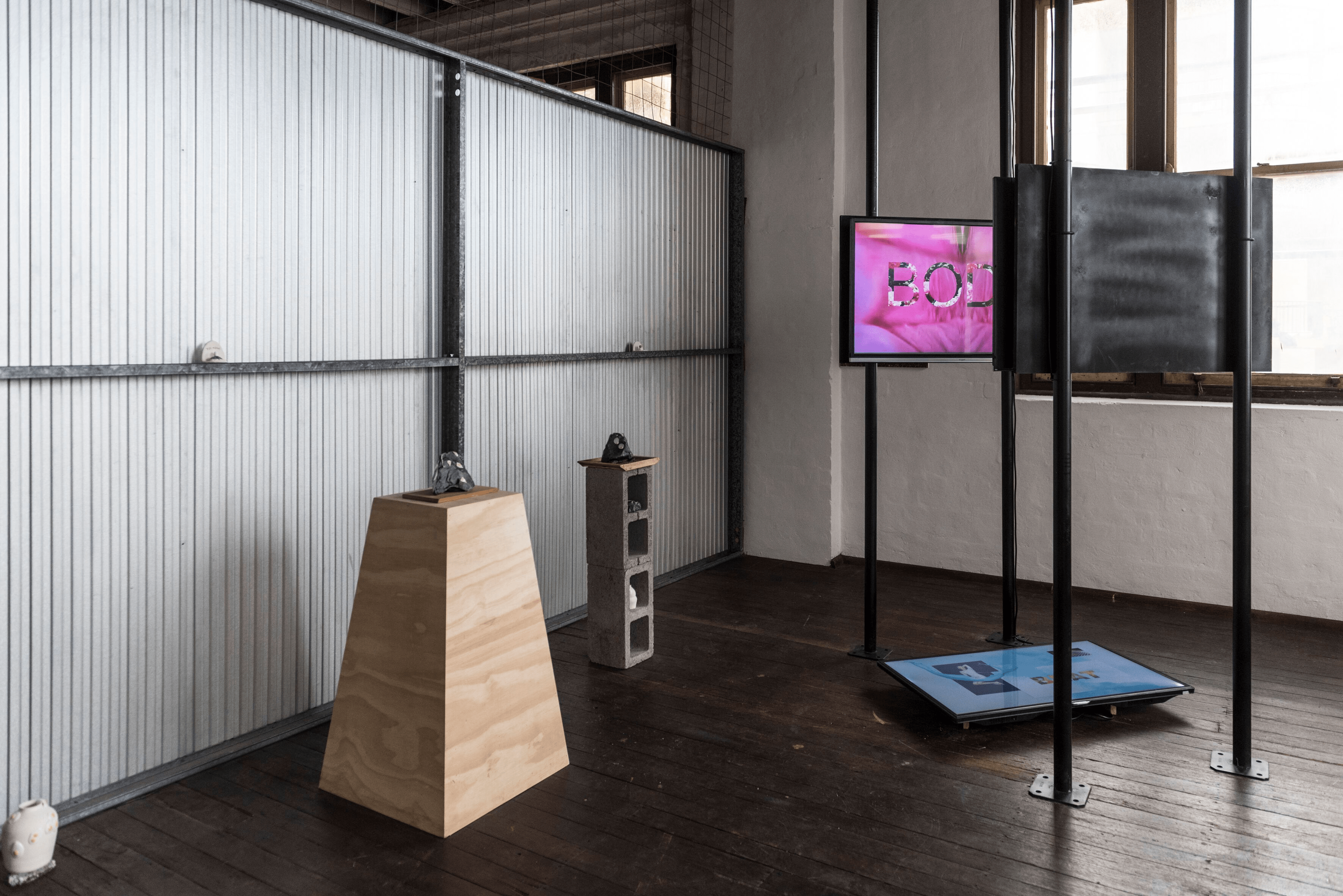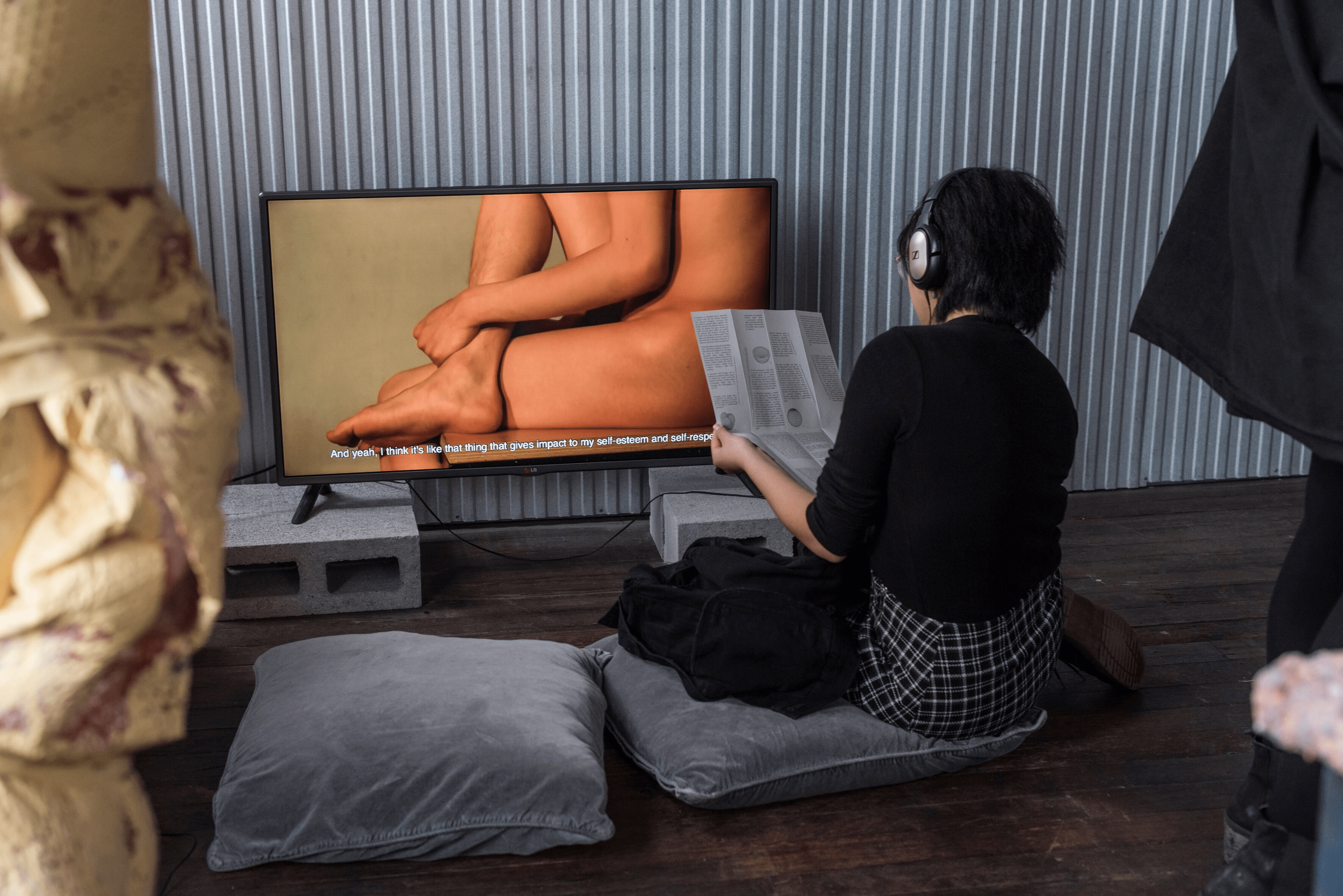


Curators: Kathleen Linn and Sarah Hibbs
Artists: Xanthe Dobbie, Clare Longley, Loc Nguyen, Nabilah Nordin / Nick Modrzewski, EJ Son and Sophie Takách
Nestled amongst the corridors and storage units of Kennards Self Storage in Ultimo, Sydney — on Gadigal and Guring-gai land — lies Potential Space. Like a lung that breathes in and expands, a storeroom becomes a liminal space — a new architectural potential space — between the building and the outside world in which a gallery temporarily exists.
Curated by Kathleen Linn and Sarah Hibbs featuring works by Xanthe Dobbie, Clare Longley, Loc Nguyen, Nabilah Nordin / Nick Modrzewski, EJ Son and Sophie Takách, Potential Space takes its title from what originated as an anatomical term to describe two surfaces ordinarily pressed together that can move apart to create space between. The exhibition contemplates the possibilities of bodily, architectural, psychological, political, social and virtual potential spaces in a push against ‘the tightly pressed together binary’1 of a society limited by heteronormative, racist, cisgendered and reductive perspectives. The works act as repositories for potentiality, speculating on what can emerge within these potential spaces.
EJ Son's ceramic sculptures — vessels and rocks — are scattered throughout the room, cracked eggs dripping down their sides. I like my eggs sunny side-up (2019), from her series 계란으로바위치다 Striking the rock with an egg (2019), playfully references a Korean proverb that contemplates situations where actions can seem futile. For the artist, this idiom ‘feels especially true to those who want to make social and cultural changes to society and the world at large.’ The egg, a symbol of new life, fertility and sustenance, here acts as a receptacle for new beginnings, including Son’s negotiation and reclamation of her Korean cultural heritage that, ‘due to feelings of racial inferiority,’ she once abandoned. Having broken free from their shells and now metaphorically frying in the sun, these eggs represent a liberation through slippages of many kinds — between cultures, inside and outside the body, even life and death — in a literal breaking open of boundaries and binaries.
In another kind of opening, Sophie Takách’s Holstered Evert Manifold 95cc (2019) makes the often-unseen space inside the vagina visible through bronze casting, looking at how contractions and expansions within the body can birth something new, whether it be an artwork or human life. The sculpture is presented to visitors in an intimate encounter as they caress its contours and converse with the gallery invigilator, overcoming the perceived barrier between artwork and audience. When not performed it is worn in a bespoke leather holster, slung across the hips where it absorbs and retains bodily warmth. The piece can be read as a womb-like extension, phallic strap-on, or weapon — something often characterised as an anatomical void is manifested in a material form that oscillates between corporeal and non-corporeal, familiar and alien, threatening and empowering.
Moving from the physical to the digital, Loc Nguyen’s No Hurt, No Scar (2018) and Xanthe Dobbie’s The Space Between (2013/2019) traverse the fluidity of gender, fantasy, reality and desire in online potential spaces. Nguyen’s practice looks at the erasure, displacement and fetishisation of queer Asian bodies in cyber gay cultures; No Hurt, No Scar details the racialised and sexualised planes upon which these bodies exist in pornographic and homoerotic encounters. The videos show close-up fragments of a nude figure while Asian men speak of the continuous subjugation of their bodies through whitewashing. Nguyen merges public with private and the pornographic with the everyday, wherein these moments of vulnerability and truth become tools for survival. With screens sitting low to the ground and accompanied by cushions to sit on, the work provides a space of comfort and care for quiet resistance.
The Space Between (2013/2019), also a video-based work, comprises Dobbie’s two-channel The Space Between (2013) and The Second Space (2019), a counterpoint to The Space Between (2013) which literally inhabits the divide between the other screens on the gallery floor. On one screen the artist writhes naked, floating across kaleidoscopic floral imagery in a manner initially reminiscent of the iconic moment in the film American Beauty (1999). Yet over time the footage becomes ‘unsettling and awkward and distinctly unsexy’ in a subversion of the gaze. Churning pink bubblegum on the adjacent screen seems to spit out overlaid floral text describing the artist’s understanding of ‘femininity, fluidity and stereotype[s]’2 at the time the work was created. The screens are installed on temporary industrial scaffolding that matches the building to create spatial porosity; at times catching the viewer’s attention while allowing other works to seep through. The Second Space incorporates similar imagery to The Space Between, yet informed by shifts in Dobbie’s perspective on the body and femininity, their movements appear less inhibited and the video is interrupted by an occasional glitch, forcing a double take. The physical body is presented as an amorphous and expansive entity mediated by the matrix of the Internet — something Dobbie has acknowledged provides ‘crucial potential for safe spaces’ in conversations around feminism gender, and trans politics.
While these pertinent works would have benefited from more room to breathe, Potential Space has an exciting experimental energy that pushes against the rising rental costs and budget cuts confining so many independent art spaces in Australia. The exhibition affirms the importance of breaking away from binaries to promote growth, expanded ways of thinking and the creation of safe spaces for nurturing oneself and others.
Johanna Bear is the Front of House Coordinator and Assistant Curator at Artspace as well as an independent curator and writer. Johanna has worked and volunteered at various arts organisations in Australia and New Zealand including the Arts Law Centre of Australia (Sydney), Auckland Art Gallery Toi o Tāmaki (New Zealand), Artspace (Auckland, New Zealand) and Govett-Brewster Art Gallery (New Plymouth, New Zealand). She holds a Bachelor of Arts (Art History) and Bachelor of Laws from the University of Sydney and University of Queensland.
